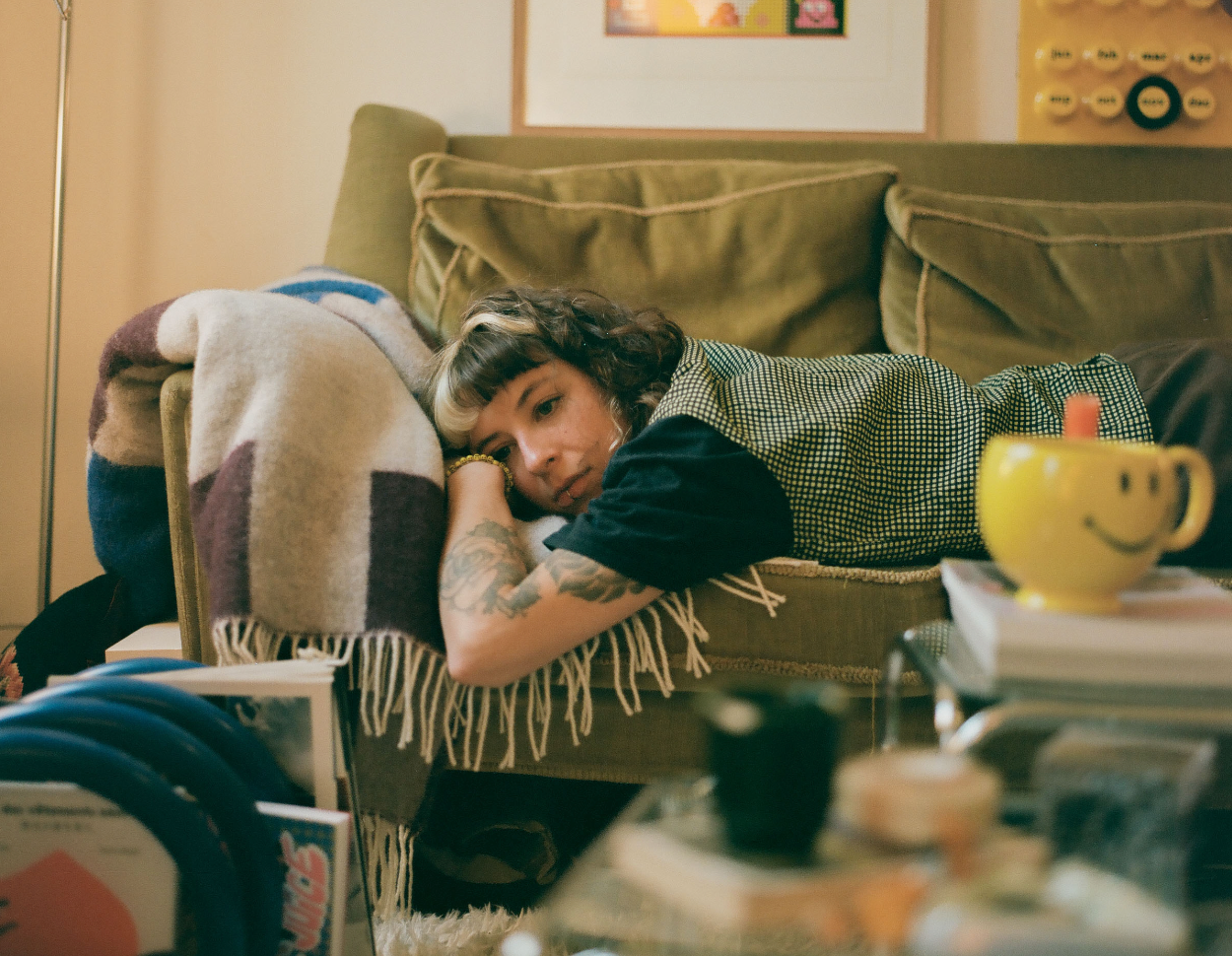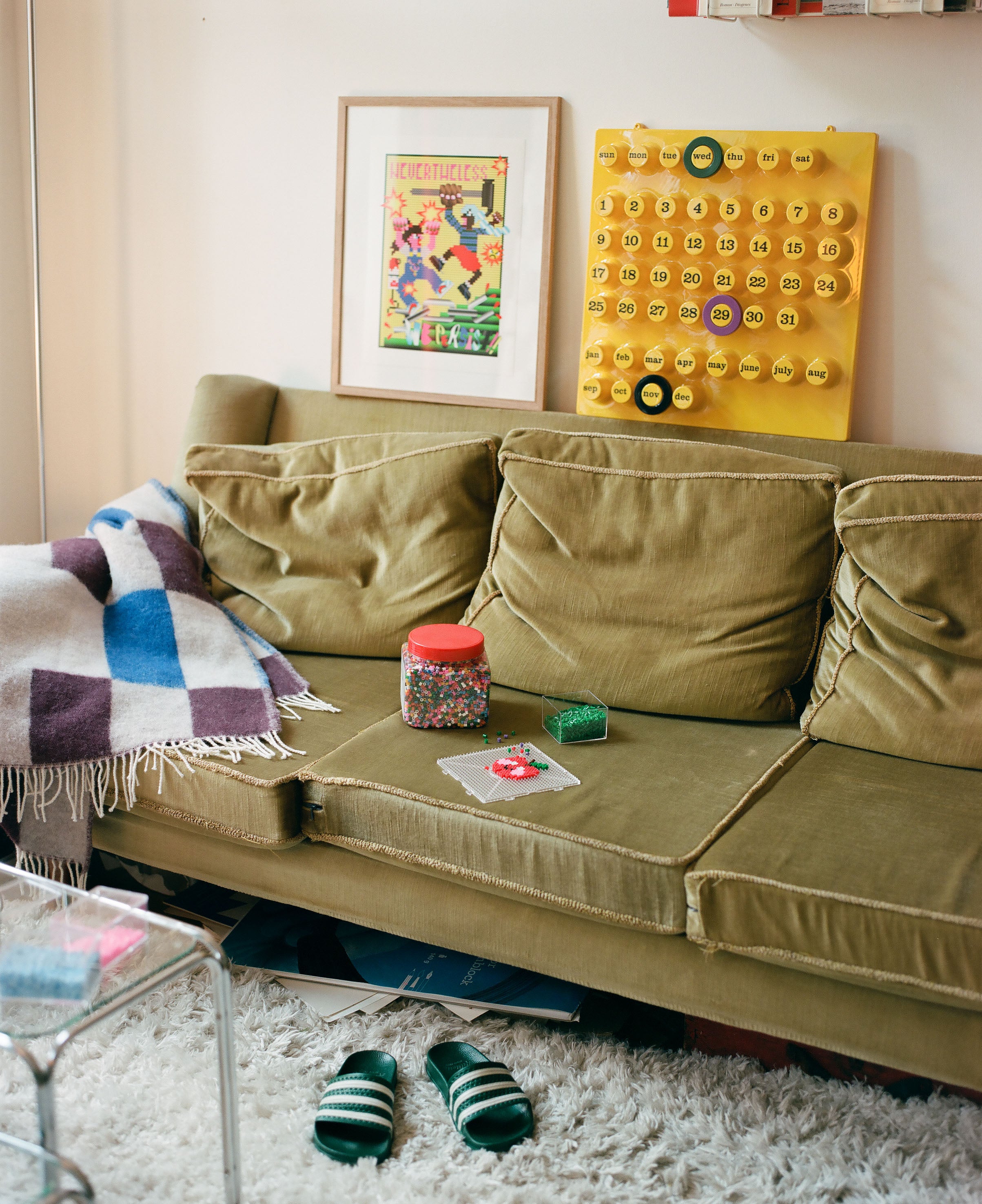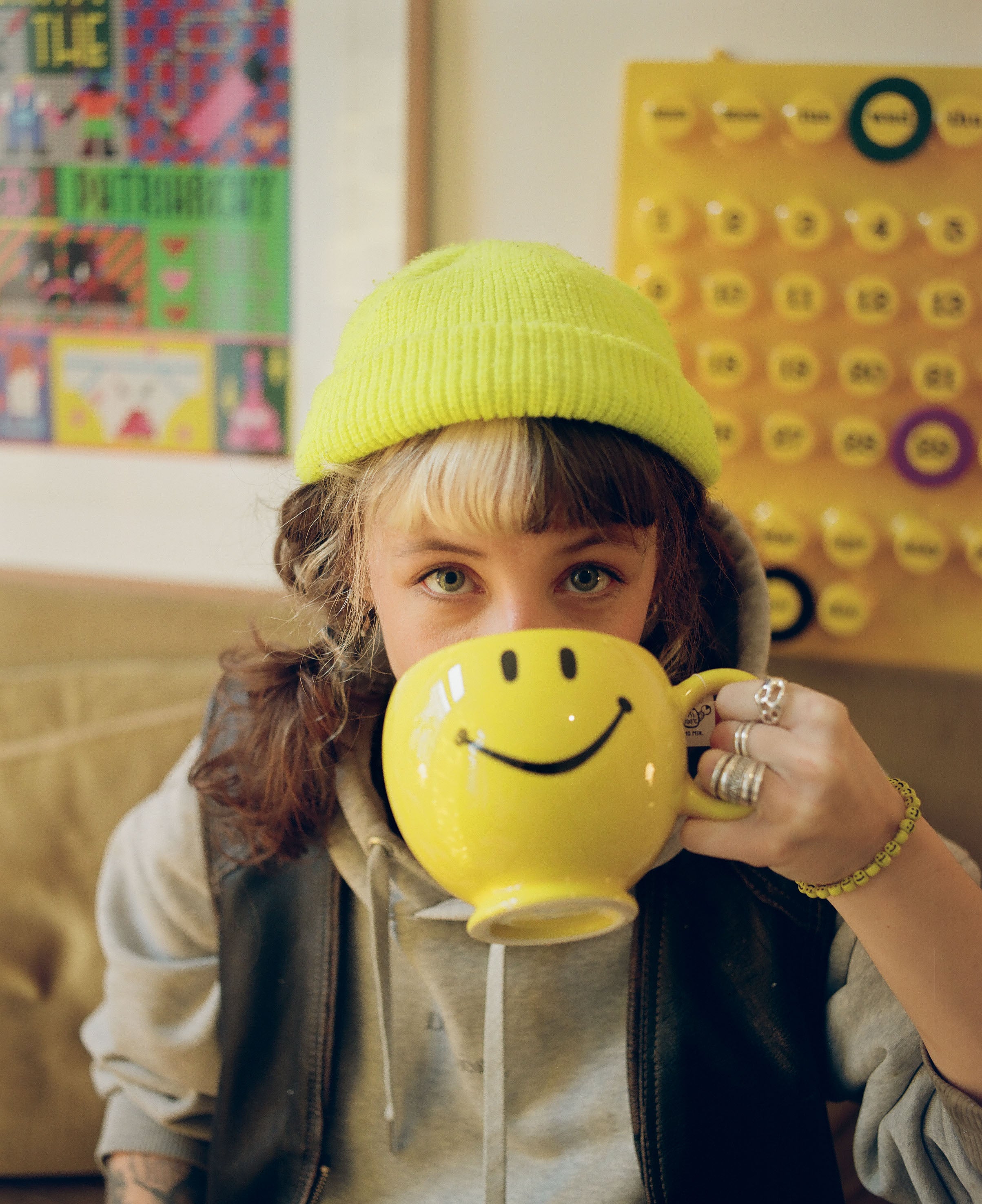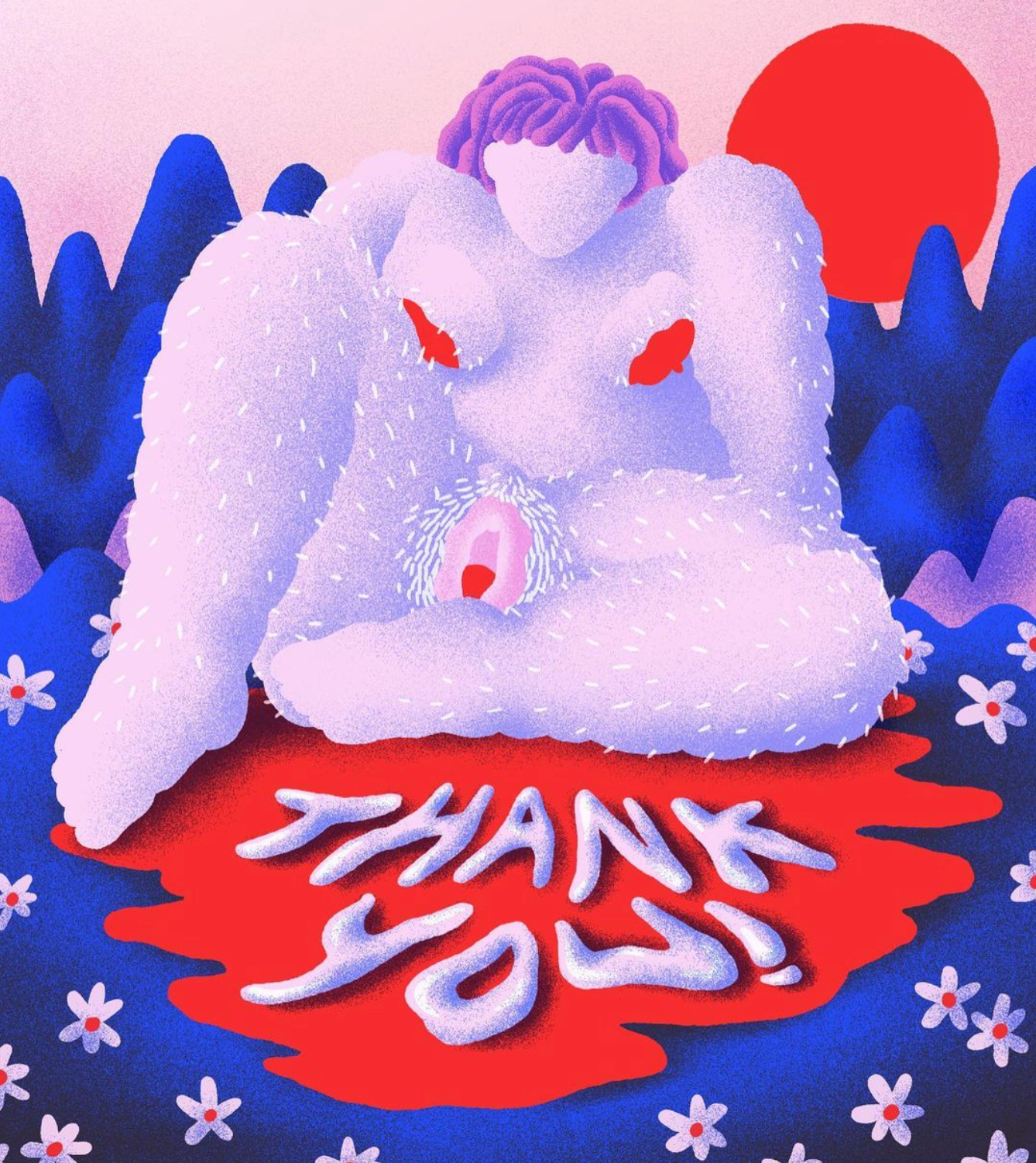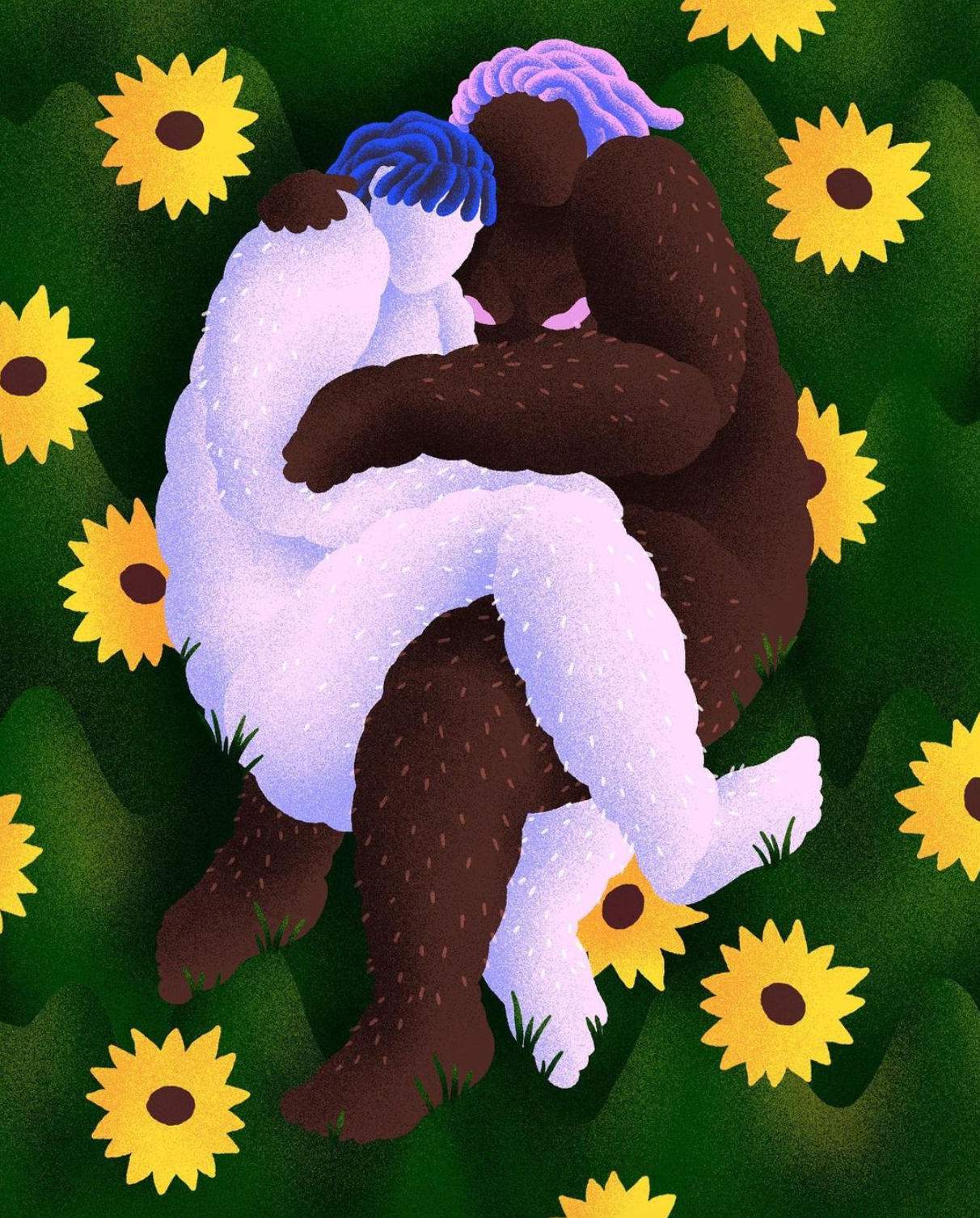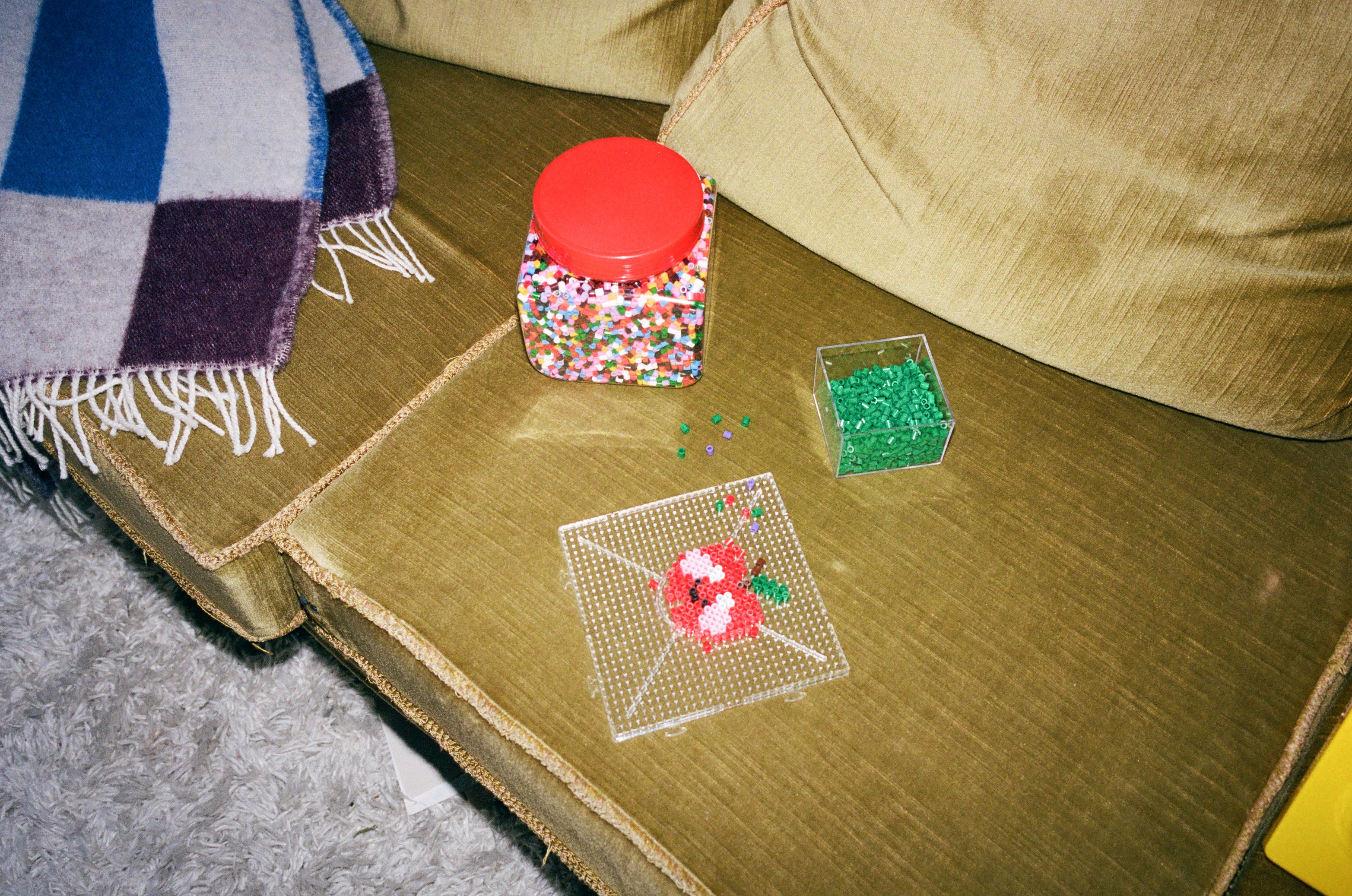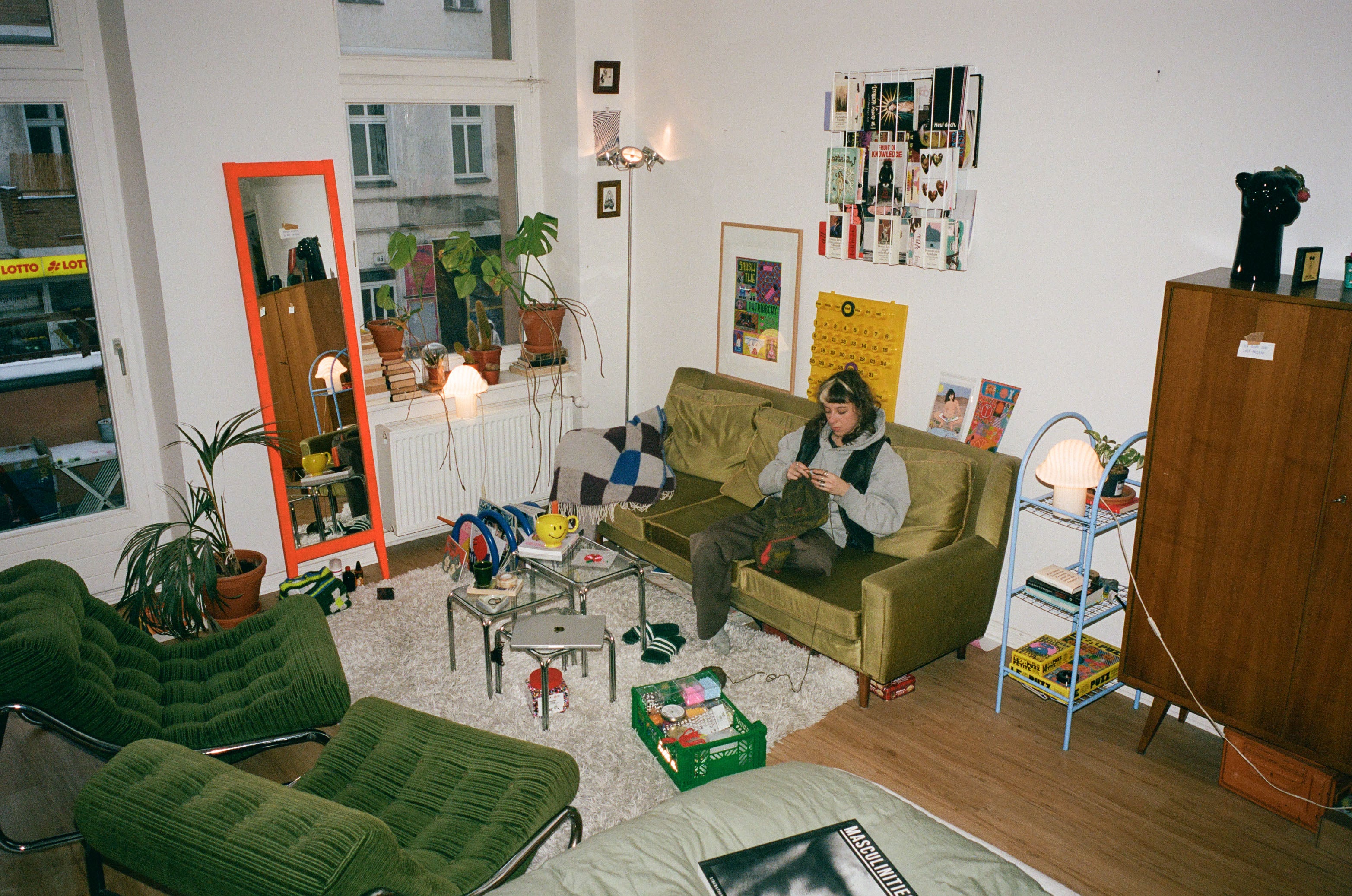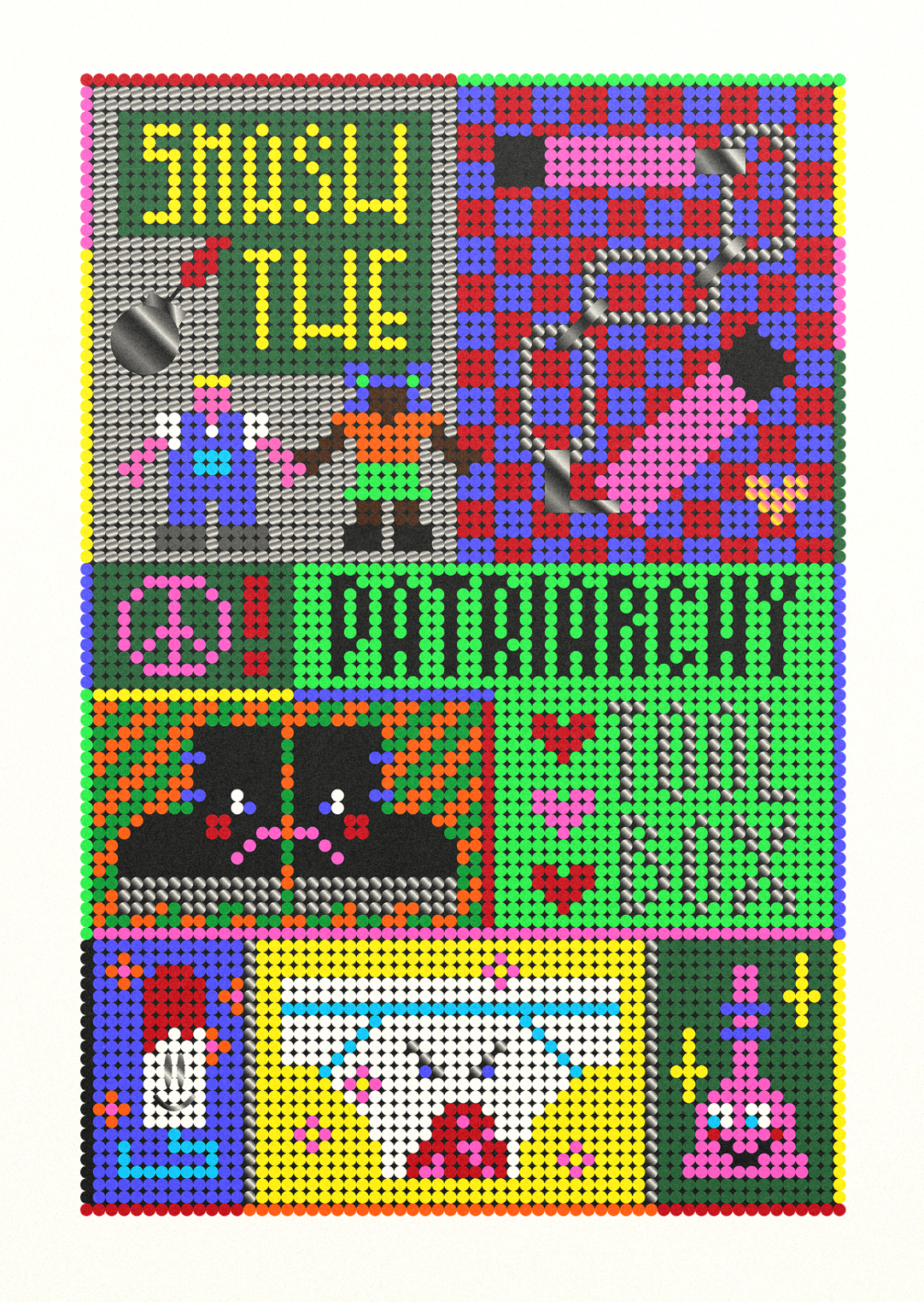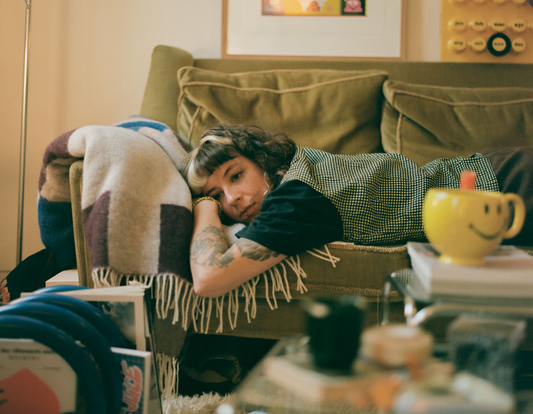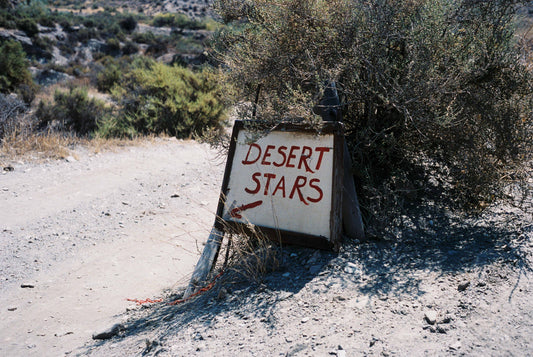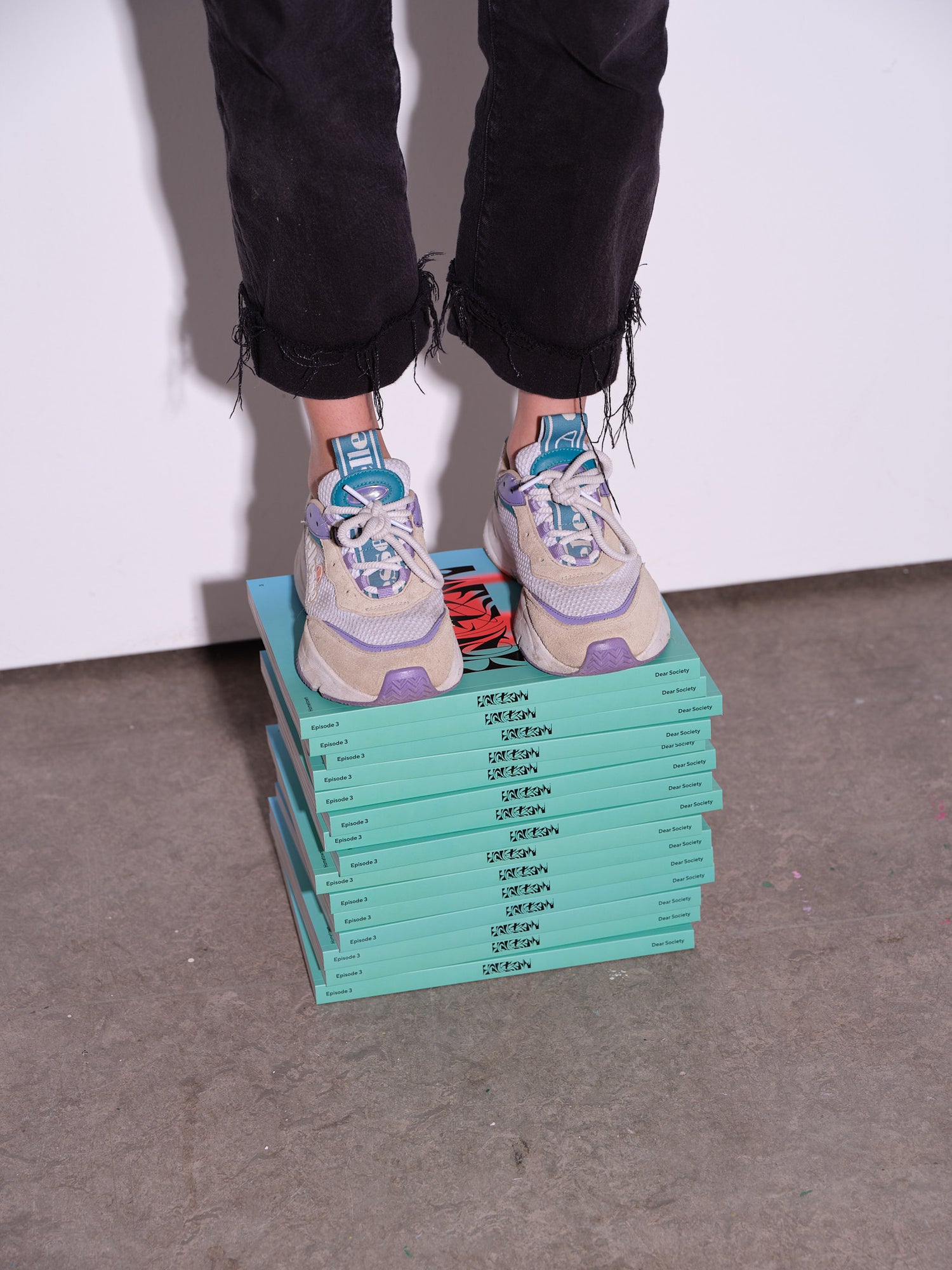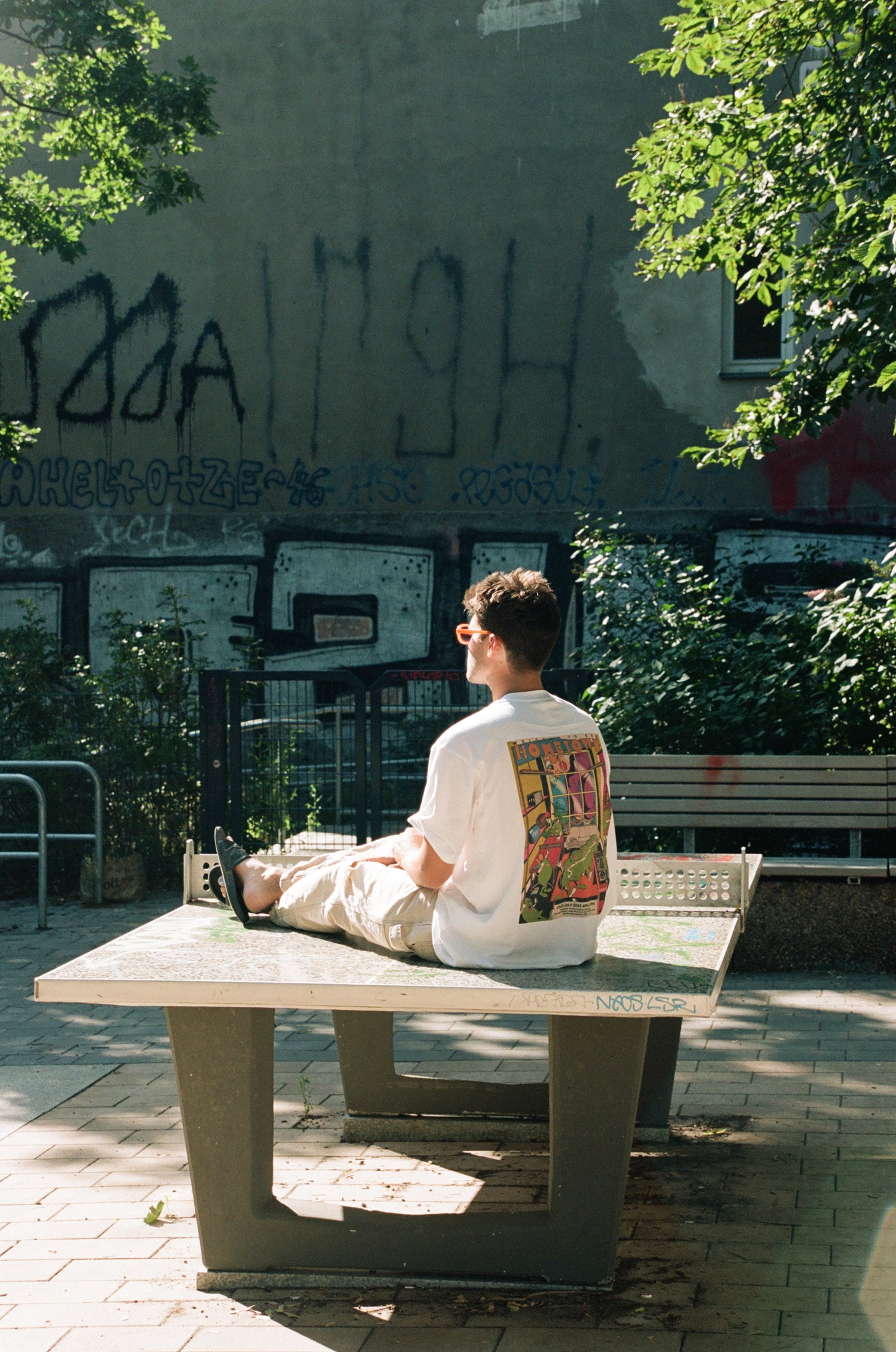Interview by Jan Eric / Illustration by Antimimosa / Photos by Alex Schuchmann / 15min
"I'm against mimosas, that's why I now call myself Antimimosa," shouted the 14-year-old girl into the room, pounding her fist on the desk. At least, that's how I imagine the situation in which Toni's artistic alias was born played out. One that today symbolizes a colourful world rebelling against patriarchy. A loud world that doesn't hide, that laughs and dances, that mourns and cries.
As she sat there in front of the Blogspot registration window, she decided on this name. Unaware of what it might eventually stand for, and what topics her art would touch. And choosing a name symbolising the opposite of who she really was back then. A frightened, unstable kid, who wanted to be someone she might yet not be. She hit the nail on the head back then, at the age of 14 when photos were primarily part of her outlet. A child who admired what others were doing and wanted to belong to it. Wanted to be cool. She simultaneously found a place that was just for her.
"It was a place where no one told me what to do, where I could just do and share what I wanted."
Until today she constantly finds herself comparing to societal ideals. Ambitious, hardworking, structured – things like these, to fit in. You should not be too emotional. Adapted.
She is, as I got to know her, mostly the opposite. Lively, laughing, loud and full of emotions. Toni has become a good friend since we first talked about her work over pizza and rhubarb spritzer about two years ago. Back then, it was about the third issue of our magazine, in which her art in the end perfectly summarized the touching story of a throuple she brought to our attention. But this self-determined artist, fighting against the patriarchy, has fought her way there. And as she surprisingly told me - understood too late how women are seen and continue to be seen in our society.
"For me, my work is also an act of redemption. By dedicating myself to this issue, I almost want to apologize for not delving into the subject for all these years. That I didn't understand feminism and intersectional feminism, and I didn't see myself as a part of it. When the penny dropped for me, it was such an enlightenment.
So, I asked myself, what can I do? How can I contribute? How can I, in my very personal way, rebel, draw attention to it, talk about it, and stir things up?"
This realization came at the age of 25 when a man she once loved stood in front of her telling her "Toni, can you believe this? She would put on her pants underneath her skirt to cover her underwear, while she's posting underwear pictures online! How prude can you be?" She was shocked how he “naturally” reduced the girl to what might have been her digital appearance. He expected that girl to not have issues with being barely dressed in front of him and blamed Instagram for creating false expectations in the end.
"A rage erupted in me. It doesn't matter how a woman or any person presents themselves or how they behave online. They could be a porn star, but if they don't know you, and simply don't want to stand in front of you in underwear, that's their right. This situation has influenced me so profoundly that I started reading, talking, and exchanging ideas with people. I had to channel this anger somewhere and deal with the shame. After all, I hadn't said anything for years myself."
Where does this feeling come from that made you believe you have to say something? Many people don't say anything and I don't think every person necessarily has to fight outwardly. You also need the energy to fight this fight in the first place. Where does that energy come from for you?
"I believe through these years of silence. Not being aware of it. When I reflect on my behaviour, I repeatedly reproduced sexism back then because it was taught to me as normal. Be it at school, be it among friends, or in the family circle, they are simply part of our society. I have an extremely pronounced moral compass, and all of this goes so extremely against my values that I somehow need to channel this feeling and deal with it.
My whole life has been shaped by it. Not saying anything, always playing a perfect world. No one knows what goes on behind the curtains. And that causes so much damage, and I just don't want to repeat that any longer."
What motivated your art before this realization?
“During my entire studies, I was kind of drifting. I shared a lot, also on Instagram and such. But due to this constant of not exactly knowing what I wanted to say, it never let me arrive. It was a very experimental time, which was good in its way, but the influences always came from outside; they didn't come from within me.”
So, it was the topic of feminism that gave you your visuality?
“I continued to experiment a lot initially, but suddenly there were these chunky figures, and for some reason, I knew right away: That's it. I found my way; I have my character, I have my colours, I have my topic, and suddenly, I could create a consistent language that came from me. And not from: “Oh, he's doing something cool, she's doing something cool, let me try that.”
But now you've completely reinvented your style. Or is this just a short journey into another world, and you'll soon go back?
“I think, after two and a half years with these characters, I reached a point where I felt like I couldn't get anything more out of it. Nothing thrilled me anymore, and I stopped drawing. I probably didn't illustrate anything for more than half a year. I was so tired and fed up with seeing that character. Even though I love it.
I think I sat there unconsciously waiting for an inspiration source, and it just happened.”
What did this inspiration look like?
"A puzzle from Lepuzz. They had a puzzle which had a design on it made of iron beads. I love everything you do with your hands, so I had to try to do something like this immediately. It was intended as a side activity, like knitting, crocheting, or solving crosswords for me. And, as usual, I overestimated myself immediately. And every time I made a mistake, I had to take out a hundred beads again and just couldn't make progress. So, I made a template in Illustrator, created these, I don't know, a thousand circles, and fell in love.
Suddenly, that inspiration was back. Suddenly, I had that fire again, which I had at the beginning when I designed my characters. It was the same feeling again. Suddenly, I had a million ideas in my head. I needed that. So, yeah. I don't think it's just a phase."
Let's rewind a bit. When did you start drawing?
"Uff, I think in kindergarten or something."
And when did you realize that you had a certain talent for it? When was the first time you thought, I believe I could become a painter or illustrator?
“During school, you get a first impression of where things might be heading. You're confronted with various subjects and realize where you might have an affinity. It's also kind of a phase of self-discovery. And the only thing I was good at was art. Art was my advanced course. I aced it without thinking that someone could ever make a profession out of it. So, when I finished my high school diploma, I fell into the first life crisis in a very classic way. I simply did not know what to do with my life.
It went so far that it became a pretty dark chapter in my life. I was severely depressed for two years. But during that time, I made the decision: I have to find something, anything, that I can do. And because my high school diploma wasn't the best, illustration seemed to be the only option.
I don't remember exactly how and why I ultimately made that decision. I just know that I went to the Academy of Illustration in Berlin, where I later studied. I sat down there with my work and just wanted to know: Could I do this? Could I become an illustrator?
They looked at my work and straight said: "You've got the spot." A month later, I started studying there.”
How much of the 'I don't know what to do' Toni is still there, and how much does illustrating give you stability in this whole matter?
“I think the question of where to go is always about the perspective over the next 30, 40 years. It's a lot about existential things. Something that accompanies you steadily. Like: Will I ever earn enough money with it that I can afford, I don't know, a house? Those things. Pension plans, and so on. And, of course, there are moments when I look around at my friends who do something completely different. Who work in the financial sector or whatever. They make a ton of money.
And of course, sometimes I'm like, "Damn, why didn't I have a talent in that area? Why am I living from hand to mouth?" So, there are moments when I curse being an artist. It's not about being rich but really about financial security, and that I chose a path that can be so unstable.
On the other hand, illustration or my artistic activity gives me the ability that, for example, during lockdown times, I didn't go crazy. I sat at home and enjoyed it because I could channel all my energy into my creativity. I didn't get bored once because I have a million hobbies and worst case I could draw every day.
So, when it comes to existential fears, being a freelance illustrator is simply not the ideal choice. But when it comes to having stability and occupying yourself, creating things that have added value, and emotionally connecting with people, then I wouldn't trade it for anything in the world.”
So, would you say you're generally happy that you chose this path?
“For example, when I've designed something for a store, and I'm standing in front of it, I could faint right away. Because I just think, "Damn, I did that." It's so absurd. The whole city is full of illustrations, full of art, and suddenly, you can say, "I'm part of it." That's crazy.
I still see that little kid who doesn't know where and if this will ever amount to anything. Whether what I'm doing is enough. Whether I'm good enough for the job. And then to see: "Yes, but look, you did this all by yourself." Those are moments when I'm extremely happy and extremely proud. Because sometimes I can't believe it myself. This is my job. I'm not just doodling here.”
You mentioned that your pictures always contain a certain feeling. Is this feeling there from the beginning, or does it develop during the process?
“The feeling is there from the beginning. It's the engine for the direction. I noticed that I haven't drawn in a while what I am passionate about, what I have a passion for. For example, the coffee picture. I believe the picture was only for me. It's my morning ritual, something that gives me security. I see a part of my passion in it, which I often haven't expressed in my works. Something that moves me, regardless of our society. Simply in my little world. When I look at the picture, I see home.
And you might not see that at first glance; it's just a random coffee tool in the end, but that's okay. It puts me personally under pressure often, thinking I have to reinvent the wheel and do something super special. And not being satisfied with what I have. How I am. And that's me. Not the great philosopher of the 21st century. I don't have 8000 layers of meaning, some meta explanation. Sometimes it's just nice to say: “Hey, this is just home."

